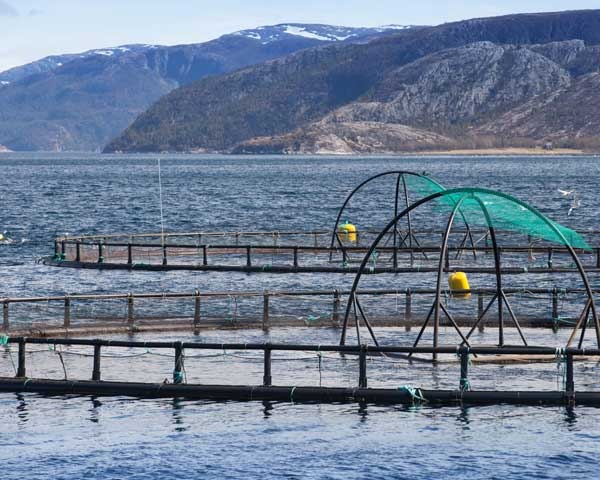'Frankenfish' Or A Way To Feed Us All?
This is one in a series of stories; visit The Daily Meal Special Report: GMOs (Genetically Modified Organisms) for more.
From ethical and ecological concerns to health issues and economic factors, the questions around genetic modification of farmed fish are swimming in debate. Genetically modified fish are those that have had their DNA scientifically modified to introduce new traits or amplify existing ones. GMO fish have the ability to resist certain diseases, are tolerant to higher or lower temperatures than their natural counterparts would be, and typically grow faster than wild or conventionally farmed fish. This brings profitable fish to market in less time, which in turn brings money into the pockets of the corporations behind the science.
There are currently at least 35 species of fish being genetically engineered, including such popular species as trout, catfish, tilapia, striped bass, flounder, and salmon. AquaBounty Technologies, the world's leading aquaculture biotechnology company, is working to achieve commercial approval from the FDA of their trademarked AquAdvantage Salmon, which is a farmed Atlantic salmon that has been genetically engineered to grow to market size twice as fast as natural salmon.
Everybody knows that wild fish stocks are being depleted around the world even as we are being counseled to eat more seafood for our health, and apologists for genetically engineered fish argue that these creatures — dubbed "Frankenfish" by some critics — could be a way to supply an ever-growing demand for fish while helping safeguard the marine environment. While there may be something to this argument, it doesn't take into consideration the survival and preservation of wild fish, or to the potentially harmful effects on those who eat the GMO variety.
What are the environmental concerns around genetically engineered fish? Like with any farmed animal, GE fish have the potential to escape from their land-based tanks or ocean-based net pens. Every year, millions of farmed fish escape into open waters and interbreed with wild fish, potentially polluting the natural genetic pool, and possibly leading to the extinction of the natural species. The release of pesticides and environmental chemicals, as well as the potential for parasitic transmission, are other concerns. AquaBounty has stated that they will only produce sterile female fish, which they say will eliminate the threat to wild salmon — but according to data submitted to the FDA by the company, they have not achieved full sterilization, and up to 5 percent of their eggs may not be sterile.
In addition, if male GE fish were to escape, they could succeed in breeding and passing their genes along to wild fish. Research published in the Proceedings of the National Academy of Science notes that a release of just 60 GE fish into a wild population of 60,000 would lead to the extinction of the wild population in fewer than 40 fish generations.
As of now, AquaBounty farm their fish near Canada's Prince Edward Island, within close proximity to Atlantic salmon and 22 rivers containing wild fish. In the FDA's Environmental Assessment Draft of AquaBounty Salmon, they stated, ”We have...made the conservative assumption herein that AquAdvantage broodstock would be able to survive in estuarine or marine salinity conditions should they escape or be released.” GE fish would not only survive, but cause a serious strain on the ecosystem. Escaped GE fish would also cause a negative effect on biodiversity. The transgenic population of fish can result in what scientists call the "Trojan gene" effect, which is when GE fish breed with native populations causing genetic alterations to be increasingly passed on to wild offspring.
Beyond the environmental concerns surrounding genetically engineered fish, there is limited data made available about the food safety issues as well. For example, GE fish also have higher level of allergy-producing compounds, meaning these kinds of fish may be a greater allergy threat to human consumers. Omega-3 levels are much lower in GE fish, which should be of interest to people looking to gain health benefits found in fish. GE fish have high levels of the insulin growth hormone (IGF – 1), the long-term health impacts of which are unknown. There are many antibiotics used in GE fish to control disease that may impact human health. Conventionally farmed fish already have higher amounts of antibiotics, and GE fish have even higher amounts. Whatever the advantages of GE fish might turn out to be, it seems clear that we don't yet know as much as we need to know about their potential effects on the environment and our health.
Emily Jacobs is the Recipe editor at The Daily Meal. Follow her on Twitter @EmilyRecipes.
